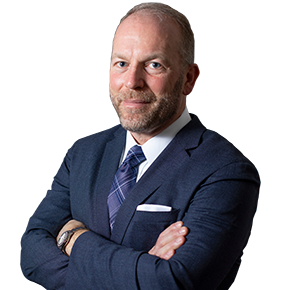Torn Rotator Cuff
The rotator cuff tendons are the four tendons around the top of the humerus that help to elevate and rotate the shoulder joint. Tears of the rotator cuff tendons can be partial where they are frayed or full thickness where there is a complete hole in the tendon. Full thickness tears are described as small, medium, large and massive. These names correspond with the size of the tear: <1cm, 1-3cm, 3-5cm and >5cm in size. Size of the tear is also described in two directions, being anterior to posterior or front to back, and medial to lateral or how much the tendon is retracted. The medial to lateral dimension is the most important as the tendon needs to be pulled back to its origin on the bone and the farther retracted the tendon the more tension is needed to bring the tendon back to its original position. Lastly when looking at rotator cuff tears in larger tears, especially those that are chronic, the muscle can atrophy. This means that the muscle shrinks and partially turns into fat and scar tissue. Atrophy is irreversible, meaning the amount of atrophy of the rotator cuff muscle does not improve after repair and sometimes worsens due to the tension on the muscle and nerves when the tendon is repaired. Also muscle that is atrophied is not as flexible as normal muscle. This can increase the retear rate as this will increase tension when the tendon is pulled back to the correct position when repaired.
When one is considering repairing a rotator cuff tear all of these issues need to be considered as increased tear size and atrophy both can affect the outcome of the surgery. Other things that can affect the outcome is associated arthritis of the joint, cephalic migration and tendon degeneration. In larger tears the humeral head can become elevated in relation to the socket. This is called cephalic migration. This occurs in large to massive rotator cuff tears where the rotator cuff is no longer depressing the humeral head and the humeral head gets pulled up to the acromion, the bone above the humerus. Chronic elevation can be irreversible as muscles become contracted over time. Lastly tendon quality can be affected by patient’s age and health. As patients get up in their 70’s and 80’s tendons tend to degenerate and become more friable or weaker making them at increased risk to retear.
Rotator cuff repair, in acute tears (tears caused recently from trauma) has been shown to have a higher success rate then when patients wait. In a prospective study looking at outcomes at 10 years after surgery, patients who had their rotator cuff repair done within three months of injury did significantly better than patients who were fixed at greater than 1 year. Also rotator cuff tears have been shown to increase in size with time. In one study tears reimaged 18 months later showed that 50% were significantly larger in size and 25% developed atrophy. For these reasons young healthy patients with a repairable rotator cuff tear should seriously consider surgery for optimal outcome.
In my practice, patients with small to large full thickness tears, reducible cephalic migration, no to mild osteoarthritis and under the age of 70 who are having pain are candidates for arthroscopic rotator cuff repair. The American Academy of Orthopedic Surgeons does not recommend rotator cuff repair in patients who do not have a complaint of pain. For patients in their early 70’s I initially recommend conservative treatment including physical therapy which has shown a 50% success rate in medium term follow up. For those patients in their early 70’s, who are in relatively good health, and who failed a course of 3 months of physical therapy I recommend arthroscopic rotator cuff repair. For patients under 60 with a massive tear that is not repairable and who have no arthritis and who have reducible cephalic migration I recommend a superior capsular reconstruction. This is a procedure where a graft is used to reconstruct the capsule at the top of the shoulder joint to hold the humerus in the correct position which can alleviate pain and improve function. For patients over 60, or patients who are under 60 with significant arthritis and with a massive rotator cuff tear that is not repairable I recommend a reverse shoulder replacement. This gives a good return to function and minimal to no pain. Patients who are doing significant manual labor may want to wait until retirement before proceeding to this procedure as the lifespan of the replacement can be shortened in patients doing significant manual labor.
Success rate from arthroscopic rotator cuff repair has been shown to be 93% in a study looking at patients an average of 4 years out from surgery. Choosing an orthopedic surgeon with extensive experience in rotator cuff repair can help choose your best option when treating your rotator cuff tear.
The Shoulder Center at Total Orthopedics & Sports Medicine provides comprehensive orthopedic treatment in Nassau and Suffolk County, Long Island for all shoulder injuries including rotator cuff tears and more. Contact us today to learn more about your treatment options.







 Website Design by
Website Design by